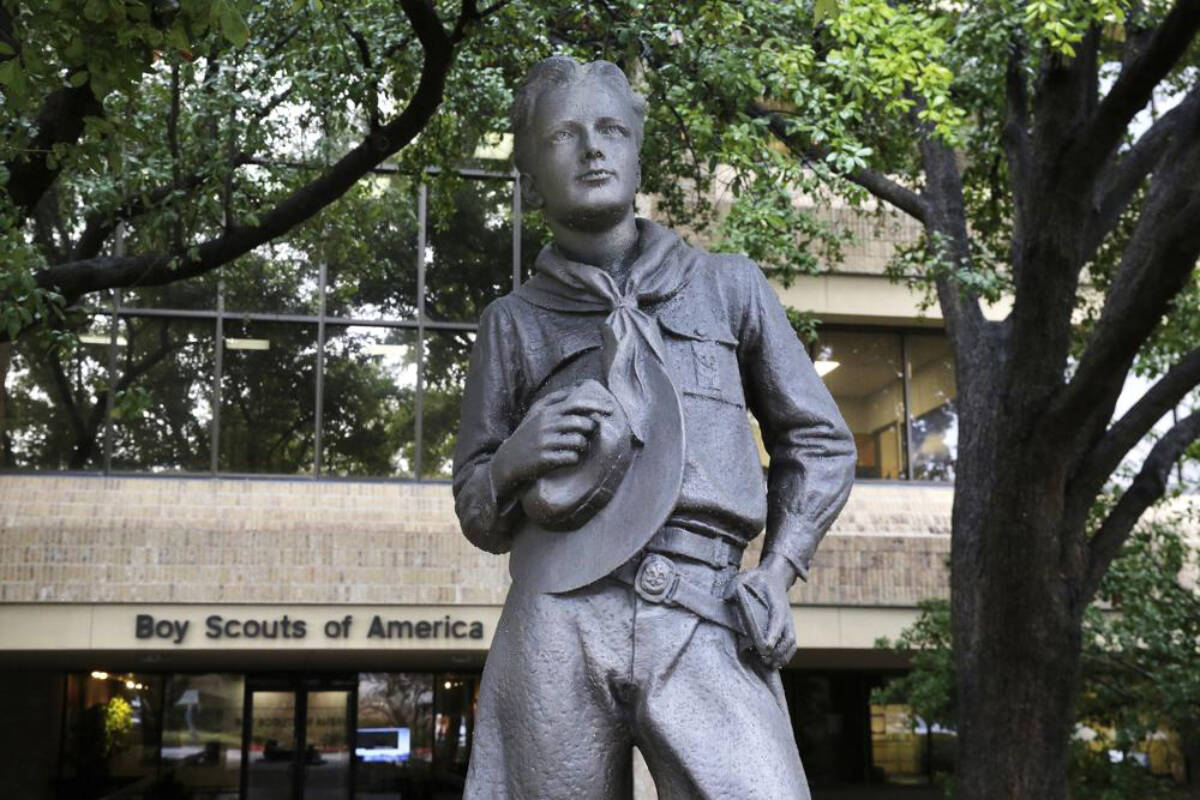Following a three-week trial, a judge in Dover, Del., began hearing closing arguments Wednesday in the Boy Scouts of America bankruptcy case.
Judge Laura Selber Silverstein must decide whether to approve a reorganization plan the BSA negotiated over the past two years. It would compensate tens of thousands of men who say they were sexually abused as children in Scouting, while allowing the Boy Scouts to continue as an ongoing enterprise.
The Boy Scouts, based in Irving, Texas, petitioned for bankruptcy protection in February 2020 in an effort to halt hundreds of individual lawsuits and create a settlement trust for abuse victims.
Although the organization faced 275 lawsuits at the time, more than 82,000 sexual abuse claims have been filed in the bankruptcy case.
The reorganization plan calls for the Boys Scouts, its 250 local councils, and certain insurance companies and troop sponsoring organizations to contribute some $2.6 billion in cash and property into a compensation fund for abuse victims.
In return for those contributions, and the assignment of insurance rights to the compensation fund, those contributing parties would be released from further liability.
The plan faces opposition from several non-settling insurance companies, as well as the U.S. bankruptcy trustee, who acts as a watchdog in Chapter 11 cases to ensure compliance with bankruptcy laws. The insurance companies contend that the procedures for distributing funds to abuse claimants would violate their rights under policies they issued and would allow payment of claims that would not win damages in civil lawsuits.
The trustee, meanwhile, has argued that the proposed liability releases for non-debtor third parties — including the local BSA councils, insurers and troop-sponsoring organizations — violate the due process rights of abuse claimants and are not authorized under the bankruptcy code.
Wednesday’s arguments did not address those issues but instead mostly involved supporters defending the plan as having been developed in “good faith,” and the trust distribution procedures as appropriate. Opponents of the plan will present counterarguments Thursday.
Attorneys for the Boy Scouts began Wednesday by acknowledging why the BSA sought bankruptcy protection and explaining the steps it has taken to improve youth protection measures.
“It’s a tragic part of the past of Scouting…. Our organization is deeply sorry,” BSA attorney Michael Andolina said of decades of child sexual abuse.
READ MORE: Biden: Putin should face war crimes trial for Bucha killings
The Boys Scouts and its supporters maintain that the judge must make several specific findings for the plan to be confirmed. Among them is that the plan was proposed in good faith, and that the procedures for compensating victims provide for a fair and equitable settlement of their claims. They also are asking the judge to find that the proposed starting claim values for various types of abuse — ranging from penetration to abuse that involves no physical contact — are based on, and consistent with, the BSA’s pre-bankruptcy abuse settlements and litigation results.
But Silverstein pushed back repeatedly on plan supporters, questioning what provisions of the bankruptcy code would apply to the findings they seek. She noted that she is not being asked to approve any specific claim settlement, as is often done in bankruptcies, and suggested that the plan supporters’ arguments instead involve treatment of claims, which is a different issue with a different approval standard.
“There’s no good way to resolve 82,000 claims, … but what’s this trust supposed to do … and why do I have to find that it’s consistent, or fair, or equitable?” she asked.
Silverstein also wondered if she could reject the plan if she thought the BSA’s pre-bankruptcy history of handling abuse claims wasn’t fair or appropriate.
“I don’t know that any one of the settlements that the debtors entered into prepetition were fair,” she said. ”… I have no facts to make a finding like that.”
Under the plan, the Boys Scouts and its roughly 250 local councils would contribute up to $786 million in cash and property and assign certain insurance rights to the victims fund. The BSA’s two largest insurers, Century Indemnity Co. and The Hartford, would contribute $800 million and $787 million, respectively, while other insurers have agreed to contribute about $69 million.
The organization’s former largest troop sponsor, the Church of Jesus Christ of Latter-day Saints, commonly known as the Mormon church, would contribute $250 million for abuse claims involving the church. Congregations affiliated with the United Methodist Church have agreed to contribute $30 million.
Abuse claimants also would be allowed to sue insurance companies and local troop-sponsoring organizations, such as churches and civic groups, that do not enter into settlements within one year of the reorganization plan taking effect.
As it presently stands, the compensation fund would total more than $2.6 billion, which would be the largest aggregate sexual abuse settlement in U.S. history. The average recovery per claimant, however, would be significantly less than in other settlements of sex abuse scandals involving large numbers of victims.
THE ASSOCIATED PRESS

